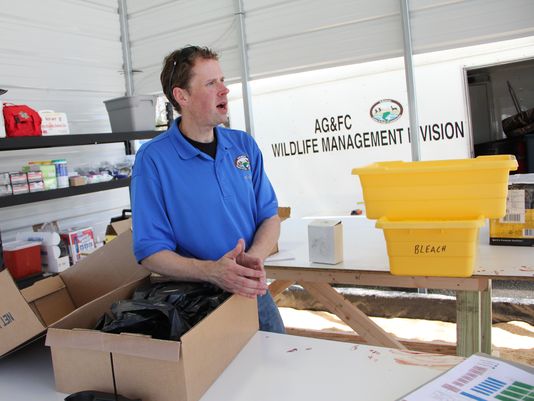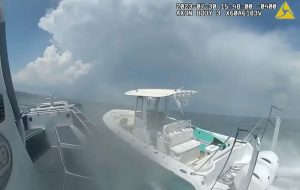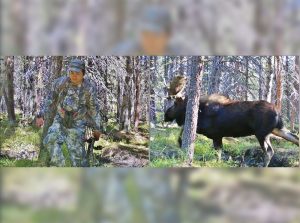Eight teams of hunters armed with high-powered rifles will descend on a five-mile-wide capsule-shaped area between Ponca and Pruitt, Arkansas after an elk and a deer tested positive for Chronic Wasting Disease. The confirmation of the presence of the disease is a first for the state of Arkansas and officials want desperately to contain it.
“Here’s the plan,” said Jeff Williams, a spokesman for Arkansas Game and Fish Commission told The Springfield News-Leader. “We want to find the prevalence and distribution of CWD in the deer — how far it has spread and how much of the herd has it. For elk, it’s not feasible to kill as many elk (the entire Arkansas elk herd is about 700 animals) so we’re asking people if they see an elk with CWD symptoms to let us know and we’ll sample that animal.”
Game officials plan to kill 300 whitetail deer and a small number of elk in the area. The animals will then be processed at a base camp in Jasper, Arkansas staffed with members of the National Park Service and AGFC. The meat that does not test positive for CWD will be donated to landowners where the animals were killed or will be provided to Arkansas Hunters Feeding the Hungry.
Officials hope the public will provide some assistance, providing detailed symptoms and physical descriptions of affected animals.
“A deer or elk with CWD will tend to be away from the herd and appear droopy,” Williams said. “They’ll walk slowly, with their head down and drooping. They’ll stand with a widened stance. Ultimately, as the disease progresses, they get extremely thirsty and start drooling. We want people to be vigilant and let us know if they see deer or elk with those kinds of symptoms.”
Prior to this organized hunt, state game officials have taken several steps to keep the disease out of Arkansas. They established a moratorium on the importation of live cervids in 2002, and restricted the importation of cervid carcasses in 2005.
The Commission has also set moratoriums on permits for commercial hunting resorts and breeder/dealer permits for cervid facilities in 2003, and on obtaining hand-captured whitetail deer in 2012.




